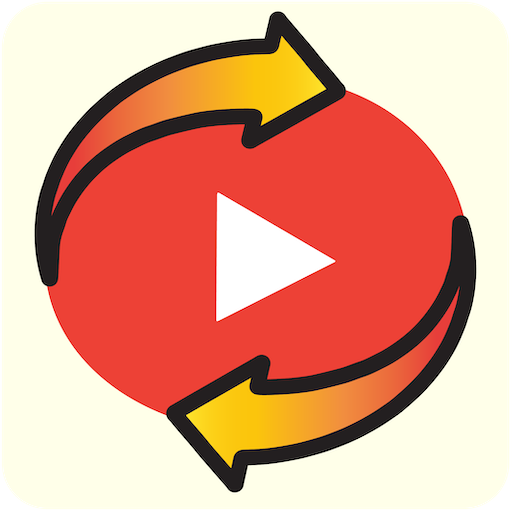
The 5-Step Daily Listening Routine That Builds Fluency Fast
Intro
Is listening comprehension your weakest skill in language learning?
You’re not alone. Many learners feel confident reading or even speaking, but when it comes to listening, they struggle to catch the fast flow of native speech. The good news is that improving your listening can be fast and fun with a daily listening practice. In fact, consistency is key – studies show it’s more effective to practice 30 minutes every day than a few hours once a week[campuspress.yale.edu] . By training your ears a little each day, you’ll quickly boost your listening comprehension, fluency, and confidence.
This 5-step daily routine is simple yet powerful. It’s designed as a language learning routine that fits in 20–30 minutes a day, so you can easily add it to your schedule. Whether you’re learning for everyday listening fluency or prepping for an exam (yes, these are great IELTS/TOEFL listening tips too!), this structured plan will help. We’ll also show you how to integrate the ListenTrainer app into your practice – a handy tool that makes active listening easier. Ready to train your ears and understand your target language faster? Let’s dive in!
Step 1: Warm Up with Easy Listening (5–10 min)
Start your routine by warming up with easy, enjoyable listening. For the first 5–10 minutes, pick low-pressure, fun content in your target language that you can mostly understand. Think of this as stretching your ears. Choose comprehensible input that is a bit below your level: for example, children’s cartoons, slow-paced vlogs, or simple podcasts. The key is that it should be content you enjoy and find easy to follow (you should understand at least 80% of it).
Hit play and just listen for pleasure – no pausing, no translating, no worrying about the words you don’t know. If you miss something, let it go. The goal here isn’t test practice; it’s to get your brain tuned into the language in a relaxed way. This warm-up helps you transition into “language mode” without stress. It’s like listening to a favorite song to get in the groove. You might watch a funny cartoon clip on YouTube or a light-hearted podcast on Spotify during your morning coffee. Daily listening practice with easy content builds your comfort and primes your brain for more challenging input. Plus, it’s a lot of fun! By the end of your 10-minute warm-up, you’ll be mentally geared up and ready for the next step.
Warm-up content ideas:
-
Cartoons or Kids’ Shows: e.g. watch an episode of Peppa Pig or a Disney cartoon dubbed in your target language. The simple language and clear pronunciation make it perfect for warming up.
-
Slow Vlogs or Easy YouTube Channels: Look for vloggers who speak slowly or channels like Easy Spanish or Simple English Videos that are made for learners. Enjoy the story without stopping for every word.
-
Beginner-Friendly Podcasts: Try a short episode from podcasts like Coffee Break French or News in Slow Italian. These are designed to be comprehensible, so you can follow along and just enjoy the content.
Step 2: Focused Listening with ListenTrainer (10–15 min)
After your warm-up, it’s time to kick things up a notch. For the next 10–15 minutes, do a session of focused, active listening using the ListenTrainer app. This tool will be your secret weapon to train your ears. Pick a YouTube video in your target language – ideally a 3-5 minute clip on a topic you like (interview, news segment, tutorial, etc.). Load it up in ListenTrainer, which will automatically toggle the subtitles on and off as the video plays.
Here’s how it works: ListenTrainer’s smart subtitle switching makes you rely on your ears first. It will play a few seconds with no subtitles, forcing you to focus and catch what’s being said, then briefly turn subtitles on so you can check if you understood correctly[listentrainer.com] . This on/off cycle repeats throughout the video. By listening without captions initially, you practice active listening – you’re essentially simulating a real conversation or exam situation. When the subtitles flash on, it’s like getting instant feedback on what you missed. Over time, this trains you to understand speech without needing any text support. In fact, this method “forces you to rely on listening, not reading,” which research shows helps you improve faster and start thinking in the target language[listentrainer.com] .
For exam takers, this step is pure gold. If you’re preparing for IELTS or TOEFL, you know in the listening test you won’t have subtitles – you need to catch spoken information in real time. Practicing with ListenTrainer is like a workout for those skills. It accustoms you to deciphering audio with minimal visual aid, building the same kind of concentration you’ll need in exam conditions. As one IELTS coach put it, your commitment to daily listening practice gives you a toolbox of abilities that will improve your IELTS results and open the door to natural communication[guestcanpost.com] . After a few weeks of daily sessions, you’ll notice you’re panicking less when you listen without subtitles. Fast speakers will seem slower and clearer because your brain has adapted.
How to use ListenTrainer: Simply paste the URL of the YouTube video and hit play. Try to listen attentively during the subtitle-off moments – concentrate on the speaker’s voice, not on reading. When subtitles appear, quickly read to see if you got it right, then switch your attention back to listening. Treat it like a game: how many seconds can you understand before you need the caption? You can even adjust how long subtitles stay off as you get better. This focused training bridges the gap from passive to active listening. It might feel challenging at first, but stick with it daily and you’ll be amazed – what used to sound like a blur will become recognizable words and phrases. Active listening for language learners has never been easier than with this kind of structured practice.
Step 3: Replay and Shadowing (5–10 min)
Now that you’ve listened to the video, let’s engage with it more deeply. For 5-10 minutes, practice something called shadowing with a portion of the audio. Shadowing means replaying a short segment and repeating it out loud, word for word, as closely as you can to the original speaker. Essentially, you become the speaker’s “shadow,” echoing their speech. This step is fantastic for improving your pronunciation, accent, and listening precision simultaneously.
Choose a short segment (maybe 20–30 seconds) from the video you just practiced, ideally a part you found interesting or challenging. Play a sentence, pause, and mimic the speaker’s words exactly: copy the pronunciation, imitate the rhythm and intonation, and try to match the speed (as much as is comfortable). For example, if the speaker said “I’ve been learning English for two years now,” you would immediately say out loud: “I’ve been learning English for two years now,” doing your best to mirror their tone and pace. You can use ListenTrainer’s replay function or simply manually rewind the video for this. Repeat each sentence or phrase a couple of times until it feels more natural rolling off your tongue.
Why do this? Shadowing is a proven technique that helps connect your listening and speaking skills. By physically speaking the sounds right after hearing them, you train your mouth and ear together. You’ll notice the subtle sound details better – how words link or how the intonation rises and falls – because you’re actively reproducing them. It’s also great for chunking, learning to group words as phrases rather than isolated words. Many polyglots rave about shadowing; in fact, language experts have found that shadowing can rapidly improve pronunciation and even listening comprehension[forum.artofmemory.com] . It’s like a mini workout for your speech muscles and listening brain.
Don’t worry about being perfect! The goal is to get close to the native sound. You might feel a bit silly talking to your screen, but trust me, this exercise works wonders. Over time, you’ll start to pick up on patterns of pronunciation and the natural “music” of the language. You’ll also become more confident in speaking because you’ve literally been practicing speaking along with native audio. So crank back that tricky sentence and shadow it a few times. This technique will make the real conversations and audio you hear much easier to follow.
Step 4: Note Down & Review Key Phrases (5 min)
After your listening and shadowing practice, take about 5 minutes to reflect and note down a few key items. Grab a notebook (or a notes app) and jot down new words, useful expressions, or any phrases that gave you trouble during the focused listening. This is a quick, low-effort review that pays huge dividends for retention. Writing something out helps transfer it to your long-term memory and creates a handy record of your progress.
What should you write? Maybe there was an idiom or slang phrase in the video you didn’t know – note it with a brief meaning. Or perhaps a certain word was hard to catch until you saw the subtitle – write that down, too, and why it was tricky (was it fast, or blended with another word?). If you had an “aha!” moment where you finally understood a word’s pronunciation, you can jot that down as well. The act of noting these details reinforces what you learned. It turns a passive encounter with a word into an active one, making it far more likely you’ll remember it next time.
Over days, these notes become a personalized phrasebook of your listening journey. Skim through past notes occasionally – you’ll be proud to find that phrases which were once confusing are now clear. This habit is also great for exam prep: if you’re aiming for TOEFL or IELTS, you can review these collected phrases as part of your study. It’s like keeping a journal of listening lessons learned. Tracking your trouble spots and victories will boost your confidence. You’ll see black-and-white proof of progress, which is super motivating. So don’t skip the notebook step – it only takes a few minutes to write down 3–5 items. As you do your daily listening practice, you’ll quickly fill pages with new vocabulary and insights. Little by little, these phrases will start popping up in your understanding (and even in your speaking). That’s the power of a brief review!
Step 5: Challenge Yourself (Optional/Bonus – 5 min)
Finally, if you have an extra 5 minutes and some mental energy left, it’s time to push your limits. This bonus step is like the “extra credit” of your listening routine: listen to something slightly above your comfort level with no subtitles or support. Think of it as a challenging workout for your ears – it builds strength over time. You might skip this on super busy days, but doing it a few times a week will accelerate your progress.
To do this, find an audio or video clip where the language is a notch faster or more complex than what you usually handle. Maybe it’s a news report, a stand-up comedy bit, or a podcast aimed at native speakers. The idea is that you probably won’t catch everything – and that’s OK! You’re deliberately exposing yourself to tough input so that normal input starts feeling easier by comparison. If using ListenTrainer, you can simulate this challenge by increasing the subtitle-off intervals (or turning subtitles off entirely) for a round, forcing yourself to listen longer without reading. Alternatively, just play the audio straight through without any captions.
As you listen, don’t stress about understanding every word. Focus on grasping the gist and identifying key words. Even if you only understand, say, 50% of it, that’s fine. You’re training your brain to handle the strain and stay calm when language gets difficult. This will make you battle-ready for real-life situations – like when a native speaker talks a mile a minute or an exam audio has an unfamiliar accent. It’s similar to athletes doing high-intensity drills so that game day feels easier. Here, you’re doing a high-intensity listening fluency drill.
Over time, what was once “above your level” gradually becomes comprehensible. Today’s 5-minute challenge might be next month’s warm-up content! By regularly stepping just outside your comfort zone, you expand that comfort zone. You’ll notice you can pay attention longer without “ear fatigue,” and fast conversations won’t scare you as much. Remember, this step is optional – if you’re too tired or short on time, it’s better to be consistent with Steps 1–4. But whenever you can, take on that challenge. It keeps things interesting and signals to your brain that you’re serious about leveling up. Active listening for language learners is like a muscle – you grow it by occasionally lifting something a bit heavier.
Wrap Up and CTA
Give yourself a high-five – you now have a 5-step daily listening routine that can dramatically improve your comprehension and fluency. The best part? It only takes around 20–30 minutes each day. By consistently doing a quick warm-up, a focused session with ListenTrainer, shadowing practice, a brief review, and the occasional challenge, you’re covering all the bases: from enjoying the language to training hard under realistic conditions. This daily routine is quick, structured, and effective, making sure you progress bit by bit every single day. Remember, language learning routine success comes from consistency. Even if you can’t do all five steps, doing just a few of them daily will beat a once-a-week binge session. Stick with it, and in a few weeks you’ll be amazed at how much more you understand and how much more confident your listening gets.
Why not start today? Pick a video, fire up ListenTrainer and try out these steps right now. It’s free, fun, and science-backed – you’ve got nothing to lose, and fluency to gain. Whether you’re gearing up for the next IELTS/TOEFL or just want to chat comfortably with native speakers, this routine will get your ears in shape fast. Improve listening comprehension one day at a time, and enjoy the process – you might even find yourself looking forward to your daily listening time as the highlight of your study! So brew a cup of tea, put on your headphones, and dive in. Consistency and smart practice are your best friends in mastering a language. Try this 5-step listening routine with ListenTrainer app and watch your listening skills soar. Happy listening, and here’s to your fast-track journey toward fluency! 🚀

